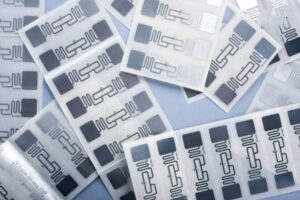Unlike traditional barcode scanners, RAMP RFID readers provide an automatic and accurate reading of labels. It enables businesses to achieve higher productivity and eliminates unproductive work.
Readers, also known as interrogators, transmit a radio frequency signal that awakens the tag and returns its ID information. They can take three forms: portal readers, handheld readers and vehicle-mounted readers.
Definition
 An RFID system uses a reader to transmit a signal that activates a microchip with stored information. This information is sent to the antenna and then converted into data, which can be transferred to a database or other system. The system is used to identify products, animals, currency, and other objects. It can be used to automate processes and reduce management times. The information can also be compared with earlier locations to help locate and return stolen goods.
An RFID system uses a reader to transmit a signal that activates a microchip with stored information. This information is sent to the antenna and then converted into data, which can be transferred to a database or other system. The system is used to identify products, animals, currency, and other objects. It can be used to automate processes and reduce management times. The information can also be compared with earlier locations to help locate and return stolen goods.
The RFID tag receives the interrogating radio signals, modulates them into backscatter symbols, and responds with an ID message. It can be passive, harnessing energy from the interrogating radio waves, or active, with a battery to boost its signal and increase read range. Its memory can be rewritable and store additional data. Passive tags are often embedded in items such as clothing or physical money or implanted into animals and humans. The fact that the information can be retrieved remotely has raised privacy concerns.
Most RFID readers can identify the information in the transponder by its ID, but some are capable of more sophisticated analysis. For instance, high-frequency RFID readers can localise a target by combining each tag’s RSS (received signal strength) information. Several readers in known locations can be used to determine the target’s location. This capability is useful for security applications like the NEXUS, SENTRI, and FAST programs at land border crossings.
Functions
RAMP RFID readers send out a signal that causes the antenna to emit radio frequency waves. When the waves reach an RFID tag, it activates and transmits data to the reader. Once the reader receives the information, it transforms it into an ID number associated with the tag’s unique identity. This ID number is then used to identify the item and relay it to a database or ERP system for processing.
RFID systems can read tags from long distances without a direct line of sight. They can also detect objects that are covered with dust or dirt. Additionally, RFID readers can work even though the items are moving and changing position. It is beneficial for warehouses and retail stores, where the products are carried throughout the store during different times of the day.
Applications
Using RFID in manufacturing, warehousing and distribution processes can save time and money and reduce the risk of human error. By automating collecting and uploading data, RFID eliminates transcription errors and missed entries when scanning items and can even provide real-time updates on the status and whereabouts of each item for everyone in the organization.
The RFID reader sends a radio signal to the tagged object, waking it up and sending back a response with data identifying the tag and its location. Passive tags use energy from the RFID reader’s interrogating radio waves, while active tags have a small battery-powered transmitter to boost the return report signal.
Many RFID systems feature a fixed reader and a tightly defined reading zone, while mobile readers can be handheld or mounted on carts or vehicles. These systems can perform hundreds of reads per second, which can help you get precise inventory control and improve productivity in high-volume situations.
RFID labels are designed to resist harsh chemicals and solvents such as alcohols, xylene and formalin, paraffin wax blocks and methyl ethyl ketone (MEK). These durable labels are ideal for medical and scientific applications, where equipment must often be immersed in harsh chemicals to be cleaned or sterilized.
Cost
The costs of RAMP RFID readers can vary based on the type of reader you choose and your use case. For example, passive RFID tags are inexpensive and can be applied once to an item for its lifetime. However, other equipment and software can be recurring costs. These can include a printer ribbon, a license that renews annually, and a maintenance contract.
Another cost consideration is the installation of the RFID system. It can be a significant expense and may require additional infrastructure, such as a wireless network or power cabling. However, the benefits of an automated data collection system outweigh the initial investment in most cases. For example, a company can improve its inventory management by using RFID to reduce the number of people needed to scan items. It can save money on labour and overhead.